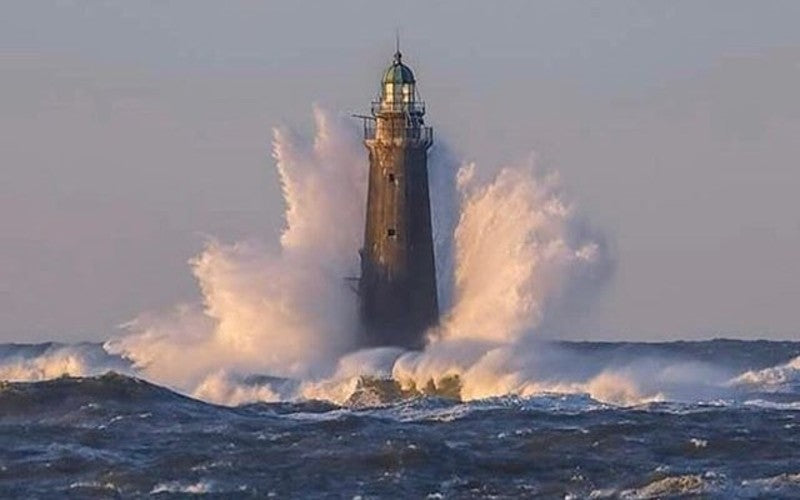
The Tragic & Creepy History Of Minots Ledge Lighthouse
Share
In the waters off of Scituate and Cohasset, Minots Ledge Light sits on a tiny outcropping battered by the waves. It is considered one of America's most romantic lighthouses, but it also has a dark and tragic past.
In fact, what happened there on April 17, 1851 is the stuff of nightmares.
On that fateful night, the beacon was torn from its perch and swept out to sea by a hurricane - taking two keepers with it.
Here is the story of Minots Ledge Lighthouse.
The original structure was built over a two year period in response to the hundreds of ships - and even more lives - lost on the rocky coast off North Scituate and Cohasset.
Minots Ledge was named for Boston merchant George Minot who lost a ship there in 1754. It was lit for the first time on January 1, 1850, flashing out a 1-4-3 cycle, the same number of letters in "I love you," and earning it the nickname "Lover’s Light."
While the United States Topographical Bureau agreed there was most certainly a need for a lighthouse off Minot Beach, questions were raised as to whether the tiny ledge could support a tall, narrow granite cylinder amid the rough water and breakers.
Cement nine iron pilings were driven into the rock with the beacon and keeper’s house on top. The architect figured this would allow the waves to break harmlessly through the uprights.
During its construction, famed writer, Henry David Thoreau passed by and was inspired to write about its unique structure:
Here was the new iron light-house, then unfinished, in the shape of an egg-shell painted red, and placed high on iron pillars, like the ovum of a sea monster floating on the waves…When I passed it the next summer it was finished and two men lived in it, and a lighthouse keeper said that in a recent gale it had rocked so as to shake the plates off the table. Think of making your bed thus in the crest of a breaker!
The original keeper, Isaac Dunham, complained about the lighthouse's faulty structure, writing just two months after it was first lit that a storm made "the light reel like a Drunken man."
His pet cat even jumped to its death in panic from the swaying tower during a winter storm. Dunham asked the government to strengthen the structure, but he was ignored. He quit on Oct. 7, 1851.
The next keeper, John Bennett was present during the April nor'easter responsible for the tower's demise. His life was spared when he rowed to shore during a lull in the storm.
However, his two assistant keepers, Joseph Wilson and Joseph Antoine, fatefully stayed behind, keeping the lantern lit and the bell ringing.
Around midnight on April 17, 1851 the tower's central support snapped. Residents on the shore heard the two assistant keepers furiously ringing the lighthouse bell. But it was too late. Soon after, the lighthouse broke apart into the sea.
The mens' bodies were found on separate beaches with Joseph Antoine in Nantasket and Joseph Wilson on Gull Rock. It was determined that Wilson survived the disaster only to die from exhaustion and exposure on the isolated beach.
Two days later, a Gloucester fisherman found a message in a bottle from the keepers:“The beacon cannot last any longer. She is shaking a good three feet each way as I write. God bless you all.”
For nine years after the tragedy, a lightship was stationed near Minots Ledge. The new lighthouse took five years to complete, with the partially finished structure swept away once again in 1852.
The new Minots Ledge Light was finally lit for the first time on Aug. 2, 1860.
Memorial plaques honoring Joseph Wilson and Joseph Antoine were lowered to the ocean floor in 2007 and another plaque stands in Cohasset Harbor.
Some believe the lighthouse is haunted by their spirits. They claim to see swaying lanterns inside the structure, hear the ringing of the alarm bell, and even the sounds of ghostly voices crying for help.
